At the start of the year I began collecting Warhammer again after many years, along with a couple of friends. The army I used to collect back in the day was Chaos, or Warriors of Chaos as they’re now more commonly known as. One of the things that always annoyed me about the game, is how variable the units equipment could sometimes be, but that the miniatures have to be glued together in only one equipment arrangement, for example, you might build your infantry with Swords and Shields, but end up wanting to use them with Two-handed weapons on occasion. Normally you’d just use the models you have, and inform your opponent that they are actually carrying Two-handed weapons, despite what the models display them carrying.
Now that I have more time on my hands, I’ve decided to try something a little different, I’m going to magnetize the weapon arms of one of my main unit types, the Chaos Warrior. The models are very modular in layout, a standard uniform stance, with little sockets for different arms to be glued into, this consistent design to the models means they’ll be very easy to magnetize, and I’m going to show you step-by-step how I’m doing it.
Apart from the models themselves, and any extra weapon parts (such as Great Weapons or Halberds for Chaos Warriors), here’s what you’re going to need.
- Pin Vice
- 3mm drill bit
- 1.5mm drill bit
- Pair of Cutting Pliers
- Super Glue
- 3mm x 1mm Rare-Earth Magnets, enough for two of them per Chaos Warrior model, one for each arm socket. I’m using 3mm diameter by 1mm thick disc magnets acquired from eBay.
- a large number of 1.5mm diameter steel panel pins with flat heads, you’ll need to locate some whose flat heads are 3mm or less in diameter, enough for every combination of weapons you want to create
Many people would just use small magnets on both sides of the parts they want to connect, but I figured the number of magnets needed would become too costly, so, I decided to use steel nail heads to create a flat surface for the magnet to connect to, aswell as being able to embed part of the nail shaft into the arm to prevent it breaking off easily.
It’s important that whatever size of magnet you want to try, that you have a drill bit that matches its size, so that you can create a snug fit for the magnet.
Ok, so first, we need to create a recess for the magnet in the arm socket, ideally we want the arm to fit in as closely as possible, so just placing the magnet within the recess already sculpted onto the model would have the arm stick out too far. Now, the magnets I’m using are 1mm thick, so I’ll want to drill at least 1mm into the model, and give another 1mm to account for the thickness of the nail head, to measure this, I’ve placed the drill bit snugly into the socket, then painted on a black line 2mm wide onto the drill bit itself, so now when I start drilling, I can keep going until the black line is covered.
This marker makes it very easy to drill the arm sockets of a lot of Warriors at a time, especially since the drill bit will cut through the plastic very quickly.
Now that we have a drilled recess, we can glue the magnet into it, these things can be rather fiddly though, so I like to place the magnet on the end of one of the steel panel pins mentioned earlier to move it into place. You only need to place a tiny amount of super glue on the magnet, otherwise it’ll seep around the edges when it’s pressed firmly down, creating a mess.
Ok, so now that we have one magnetized arm socket, we’re going to have to sort out some weapons to fit into it!
These magnets are pretty strong, and can hold a fair amount of weight for their size, it’ll hold a steel nail in place solidly, it won’t be going anywhere until you pull it off.
From what I can tell, the diameter of nails can vary somewhat to what they’re supposed to be, so I had to go through some trial and error locating the right nail that was as close as possible in size to the drill bits I had available.
It’s also important that the diameter of the nail is a fair bit thinner than the thickness of the arm you’re drilling it into, as the plastic will easily give away and break open if you try to force too wide a nail in there.
One of the more laborious tasks involved with using nail heads and not just more magnets, is needing to cut the heads off, for which you’ll need a strong pair of cutting pliers. I had tried to use a saw at first, but it would take far too long. I recommend a pair of work gloves when using the pliers, as the forceful nature of cutting through the nails can be rough on the hands. I also like to cover the end of the pliers and the nail with an old shirt, just to prevent the cut parts from going flying across the room.
You’ll want to leave a couple of millimetres of length to the nail head so that it can be slotted into a drilled hole for added stability. Don’t throw away the rest of the nail, the shafts could come in handy for thick strengthening pins for large models and conversions.
This part can be tricky, as you’ll want to drill the hole as close to the centre of the socket-end of the arm so that it sits straight, and you’ll also not want to drill too deep, though it doesn’t need to be as precise as the recess for the magnet. If you’re worried about drilling too deep, try using a painted marker on the drill bit to give you an indication of when to stop.
Now that we have a hole, all that’s left is to slot the nail head into it. You’ll want to put a very small amount of super glue into the hole, just around the top edge of the hole. I recommend putting the nail head only slightly into the hole, then pressing down the entire arm onto a hard surface to push the nail head fully into the hole.
Ok, so here we have it, a magnetic arm socket, and a compatible weapon arm. You’ll of course need to repeat this process for every Chaos Warrior, and every possible weapon/shield combination, so it can take a while to complete, but I think the effort is worth it for the versatility you gain.
So now, when I grow bored of Bob having a Sword and Shield, I’ll be able to take away his sword, and give him a Halberd instead. An added benefit of these modular arm sockets is being able to have as many musicians/standards as I care to make arms for, so If I magnetize 50+ warriors, I could combine them into as many units with command groups as I have standards/musician parts assembled, it will also allow me to create God-specific banners, and swap them out depending on which Mark of the Gods I give the unit.
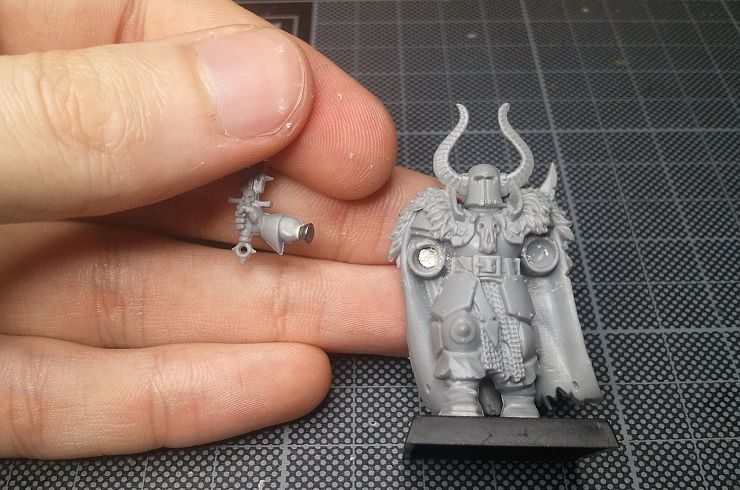
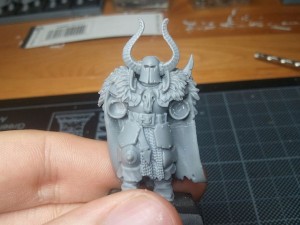
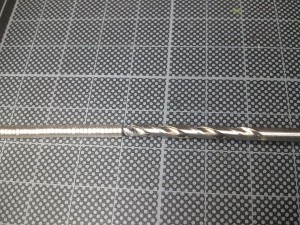
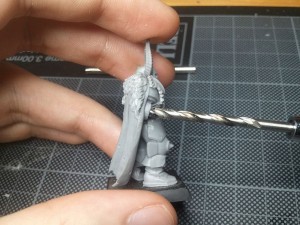
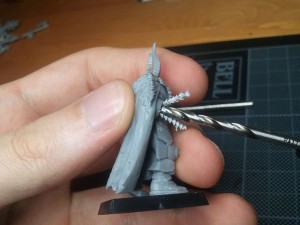
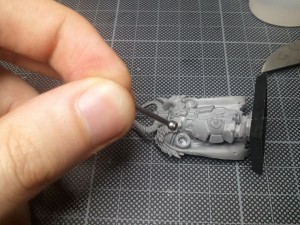
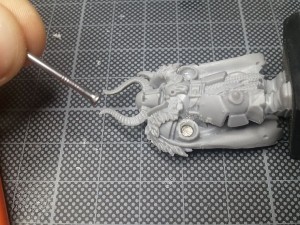
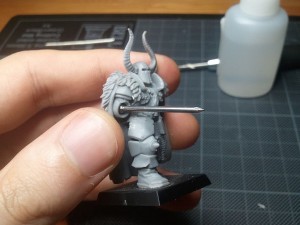
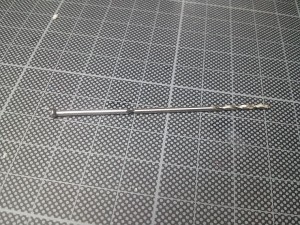
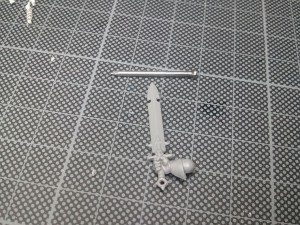
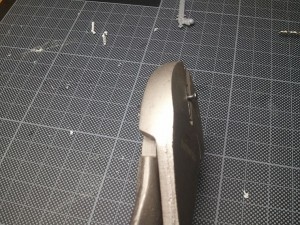
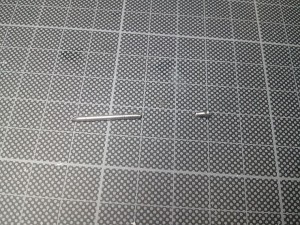
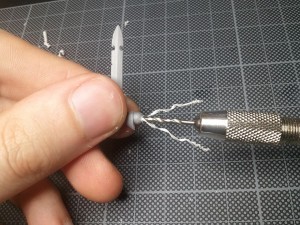
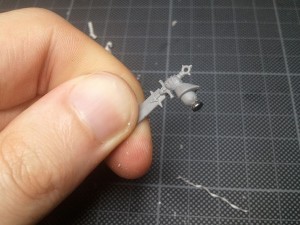
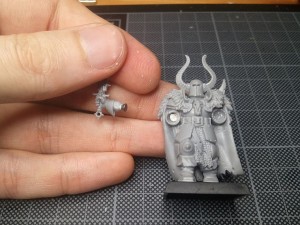
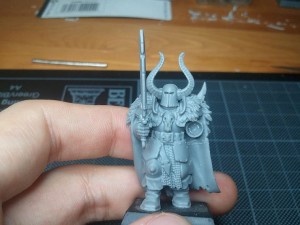
Fantastic this is deffently on my to do list.